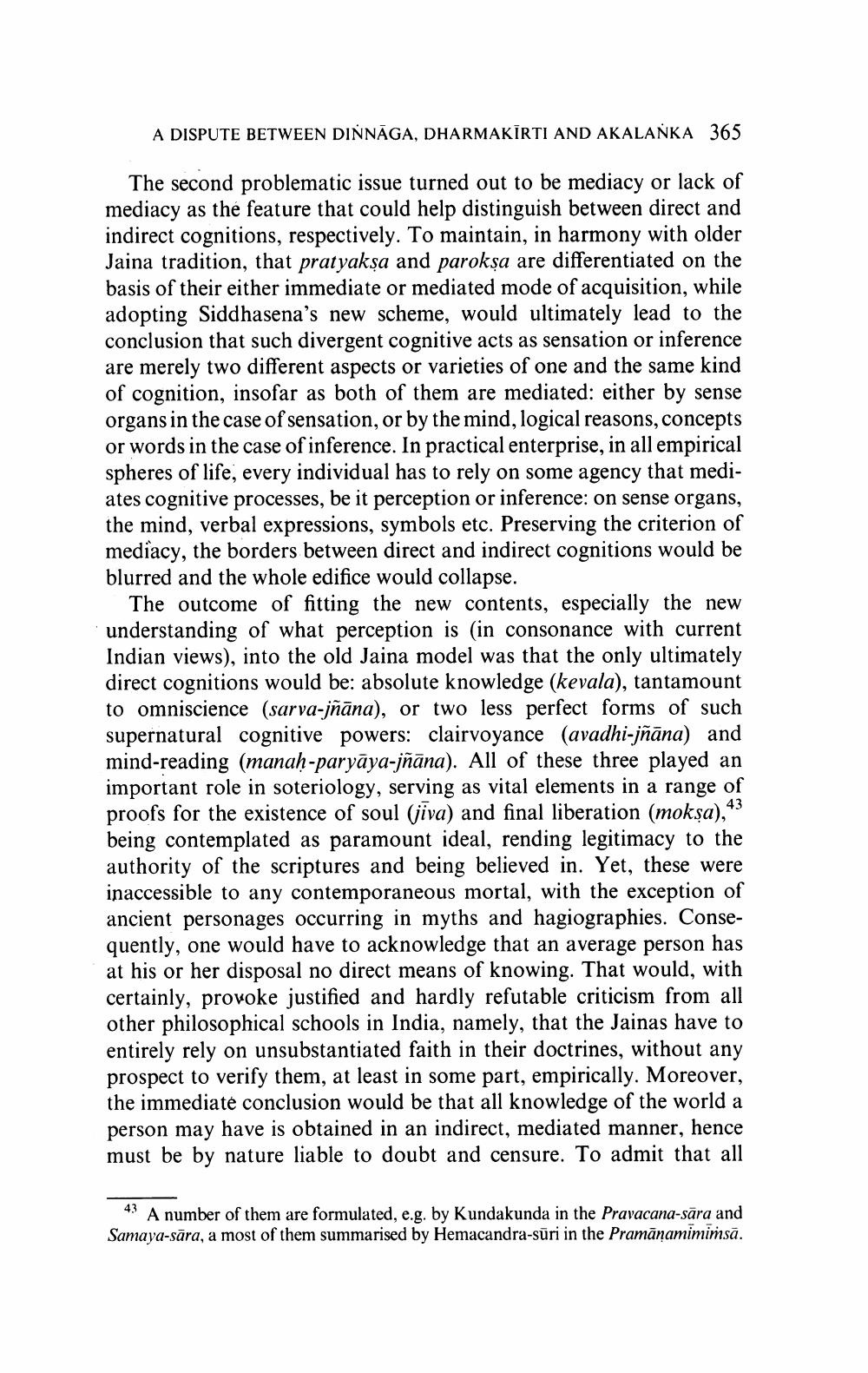________________
A DISPUTE BETWEEN DINNĀGA, DHARMAKĪRTI AND AKALANKA 365
The second problematic issue turned out to be mediacy or lack of mediacy as the feature that could help distinguish between direct and indirect cognitions, respectively. To maintain, in harmony with older Jaina tradition, that pratyaksa and paroksa are differentiated on the basis of their either immediate or mediated mode of acquisition, while adopting Siddhasena's new scheme, would ultimately lead to the conclusion that such divergent cognitive acts as sensation or inference are merely two different aspects or varieties of one and the same kind of cognition, insofar as both of them are mediated: either by sense organs in the case of sensation, or by the mind, logical reasons, concepts or words in the case of inference. In practical enterprise, in all empirical spheres of life, every individual has to rely on some agency that mediates cognitive processes, be it perception or inference: on sense organs, the mind, verbal expressions, symbols etc. Preserving the criterion of mediacy, the borders between direct and indirect cognitions would be blurred and the whole edifice would collapse.
The outcome of fitting the new contents, especially the new understanding of what perception is (in consonance with current Indian views), into the old Jaina model was that the only ultimately direct cognitions would be: absolute knowledge (kevala), tantamount to omniscience (sarva-jñāna), or two less perfect forms of such supernatural cognitive powers: clairvoyance (avadhi-jñāna) and mind-reading (manah-paryāya-jñāna). All of these three played an important role in soteriology, serving as vital elements in a range of proofs for the existence of soul (jiva) and final liberation (mokşa),43 being contemplated as paramount ideal, rending legitimacy to the authority of the scriptures and being believed in. Yet, these were inaccessible to any contemporaneous mortal, with the exception of ancient personages occurring in myths and hagiographies. Consequently, one would have to acknowledge that an average person has at his or her disposal no direct means of knowing. That would, with certainly, provoke justified and hardly refutable criticism from all other philosophical schools in India, namely, that the Jainas have to entirely rely on unsubstantiated faith in their doctrines, without any prospect to verify them, at least in some part, empirically. Moreover, the immediate conclusion would be that all knowledge of the world a person may have is obtained in an indirect, mediated manner, hence must be by nature liable to doubt and censure. To admit that all
43 A number of them are formulated, e.g. by Kundakunda in the Pravacana-sära and Samaya-sāra, a most of them summarised by Hemacandra-sūri in the Pramānamimimsā.




